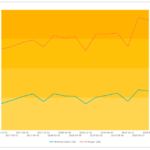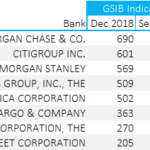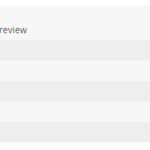GSIBView
GSIBScores and component Data for 118 Global Banks
For financial firms, we offer a free trial
Observe changes over time periods
Drilldown into the Components
Compare banks in Peer Groups
Easy to Trial, Purchase and Start Using
Learn about GSIBView
Latest Posts
-
Dec, 9
GSIBs in 2020
The same 30 banks as in 2019 have been defined as GSIBs in 2020.JP Morgan, Wells Fargo and Goldman Sachs have all managed to move into lower tiers, requiring less capital.We look at the data behind the GSIB indicators using GSIBView, our latest data offering.Optimisation of the GSIB metrics is evident in the data and […]
Read moreApr, 21The GSIB Framework and Window Dressing
What Are GSIBs? If you need a refresher of the GSIB framework, please check-out our blogs on: G-SIB MECHANICS AND DEFINITIONS G-SIB SCORES FOR US BANKS We have recently introduced GSIBView, an app for analysing the scores in more detail. It provides a drill-down into the GSIB components and allows our data customers to analyse […]
Read more -
Mar, 17
Want to know all about Global Systemic Banks? Introducing GSIBView
GSIBView is the latest data product from ClarusFT. We collect and calculate the GSIB scores for 118 banks. Data shows how GSIB scores and components change over time. Drill-down into components and compare across peer groups. This blog looks at funding data, payments data and derivative notionals of RBS, ICBC and Morgan Stanley. Global Systemically […]
Read moreDec, 4G-SIB Scores for US Banks
We detail the GSIB methodology for US banks, referred to as “Method 2” in the literature. We calculate the GSIB scores for 8 US banks as at December 2018 and September 2019. We find that the Method 2 scores are particularly penal for Morgan Stanley. It will be interesting to see how these scores change […]
Read more -
Nov, 26
G-SIB Mechanics and Definitions
There are 30 Global Systemically Important Banks (G-SIBs) in 2019. A bank must hold at least an extra 1% in Tier One capital as a result of qualifying as a G-SIB. We look at the calculations necessary to work out a bank’s G-SIB score and calculate the exact values for 2019. We estimate that HSBC […]
Read more





